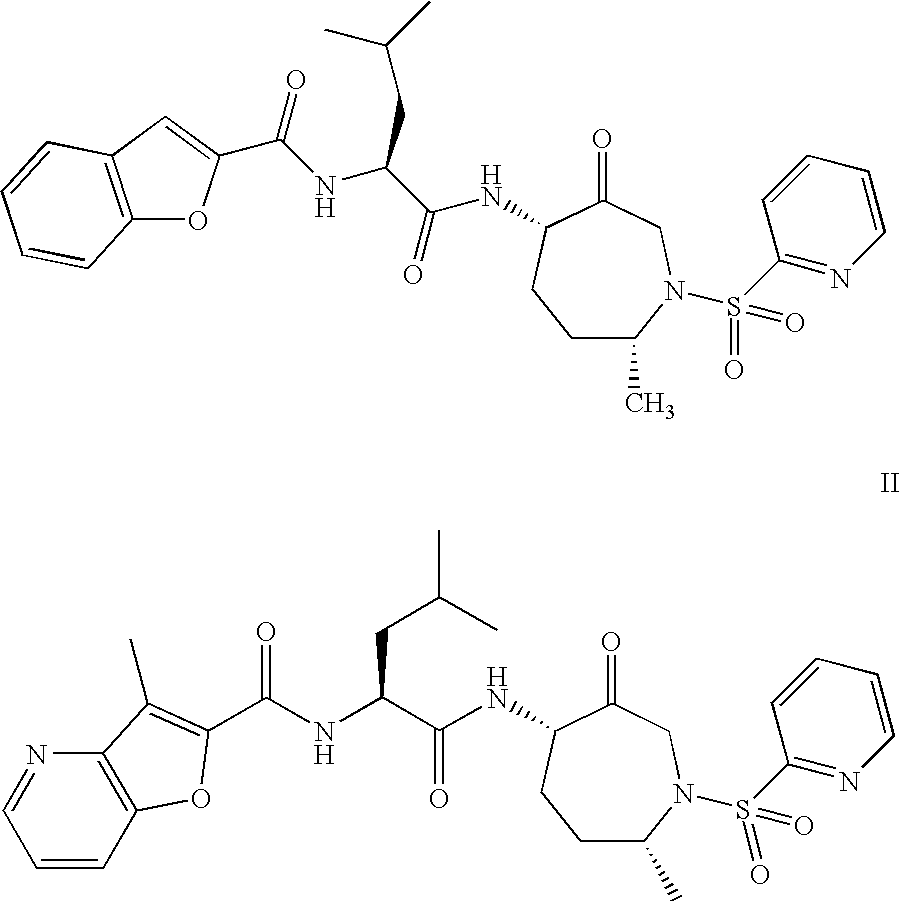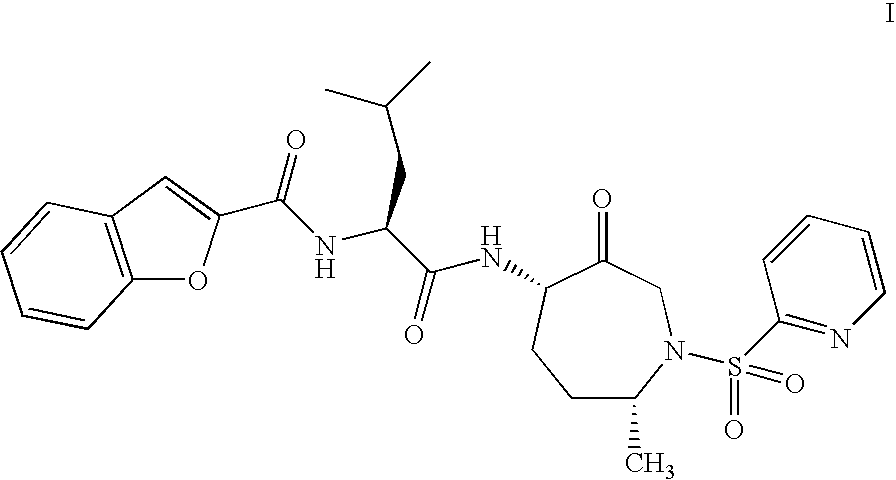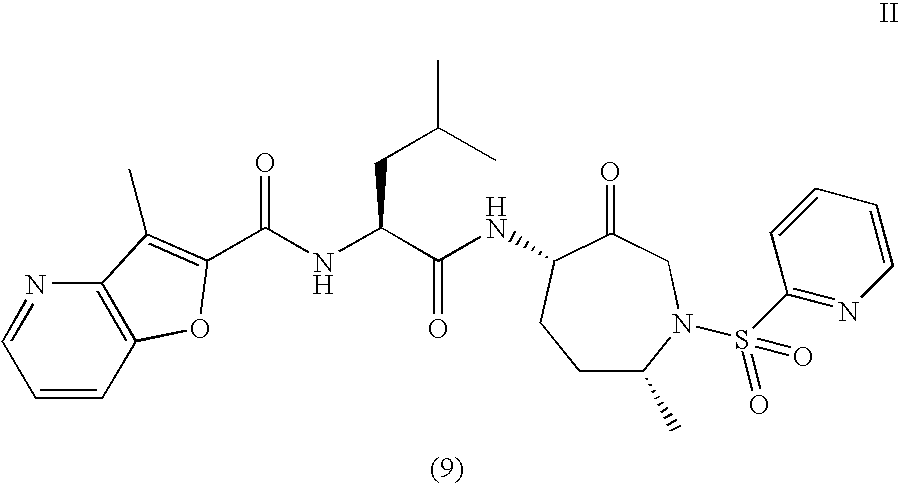Method of Preparation of Benzofuran-2-Carboxylic Acid -Amide
a technology of benzofuran and carboxylic acid, which is applied in the field of preparation of benzofuran-2-carboxylic acid, can solve the problems of inability to meet the requirements of high-quality benzofuran,
- Summary
- Abstract
- Description
- Claims
- Application Information
AI Technical Summary
Benefits of technology
Problems solved by technology
Method used
Image
Examples
example 1
Benzofuran-2-carboxylic acid {(S)-3-methyl-1-[(4S,7R)-7-methyl-3-oxo-1-(pyridine-2-sulfonyl)-azepan-4-ylcarbamoyl]-butyl}-amide
Preparation of 2-[(1S)-1-(2R)-oxiranyl-2-propenyl]-1H-isoindole-1,3(2H)-dione (Compound 2-3)
[0097]To a solution of (2S,3R)-1,2-epoxy-4-penten-3-ol (compound 2-2) (1 g, 9.99 mmol) in ethyl acetate (10 mL) was added triphenylphosphine (3.14 g, 11.97 mmol) and the solution stirred at 20-25° C. until the triphenylphosphine had dissolved. Phthalimide (1.75 g, 11.89 mmol) was then added to this solution. In a separate flask diisopropylazodicarboxylate (DIAD) was dissolved in ethyl acetate (5 mL). The diisopropyl azodicarboxylate solution was added via dropping funnel to the compound 2-2 solution dropwise over about 1 h. During this addition the temperature of the reaction was maintained between 20-30° C. After the addition was complete the solution was concentrated to dryness and reconstituted in toluene. The mixture was cooled to 0-5° C. and held at this temperat...
example 2
3-methyl-N4[(1S)-3-methyl-1-({[(4S,7R)-7-methyl-3-oxo-1-(2-pyridinylsulfonyl) hexahydro-1H-azepin-4-yl]amino}carbonyl)butyl]furo[3,2-b]pyridine-2-carboxamide
Preparation of 3-methylfuro[3,2-b]pyridine-2-carboxylic acid (6-1)
[0113]Under nitrogen, charge the flask with 3 M methyl magnesium chloride in THF (600 mL, 1.80 mol, 5.0 equiv) and THF (500 mL). Heat the solution to 60-65° C. and add a solution of 3-hydroxypicolinic acid (1) (50 g, 0.36 mole), triethylamine (50 mL, 0.36 mole) in THF (250 mL) to the reaction mixture over approximately 3 h. Continue heating at reflux for 2 h. Cool the reaction to 5-10° C. and add methyl formate (44 mL) keeping the reaction temperature less than 20° C. At 10° C., add 10% aqueous HCl to a pH 34. Transfer to separatory funnel and allow the layers to separate. Remove the top organic phase and extract the aqueous phase with THF (250 mL). Combine the organic phases combined and concentrate to 13-15 volumes and add water (170 mL). Continue with the vacuu...
PUM
 Login to View More
Login to View More Abstract
Description
Claims
Application Information
 Login to View More
Login to View More - R&D
- Intellectual Property
- Life Sciences
- Materials
- Tech Scout
- Unparalleled Data Quality
- Higher Quality Content
- 60% Fewer Hallucinations
Browse by: Latest US Patents, China's latest patents, Technical Efficacy Thesaurus, Application Domain, Technology Topic, Popular Technical Reports.
© 2025 PatSnap. All rights reserved.Legal|Privacy policy|Modern Slavery Act Transparency Statement|Sitemap|About US| Contact US: help@patsnap.com



